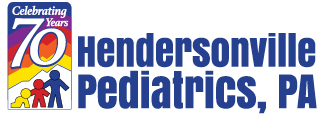Food allergies account for up to 8% of early childhood conditions and concerns in the United States. That is roughly 1 in 13 children, or about 2 students per classroom. A food allergy is when the body’s immune system reacts unusually and sometimes seriously to specific foods. They can be mild, causing a rash, hives, or can be serious and cause anaphylaxis, which is an extreme reaction where the mouth, tongue, throat or other part of the airway can swell up and prevent breathing.
In some cases, depending on severity, food allergies can cause vomiting or other facial swelling. Some of the most common food allergens are milk, eggs, fish or seafood, wheat, soy, peanuts and tree nuts.
Unfortunately, there is no cure available at the writing of this article for allergies, and most treatment plans include avoiding foods that trigger these allergies, as well and prescribing antihistamines or an Epi-pen for serious cases most likely to turn into anaphylaxis if the child comes into contact with the allergen.
If you suspect your child may have an allergy, ask your child's doctor and they will often be referred to an ENT or “Ear, Nose, and Throat” doctor, where blood and skin scrape tests can be done to determine or rule out the presence of a food allergy. Other cases of allergies can be clearer cut, or present obvious symptoms where parents may decide to cut out certain foods after noticing an unusual reaction, such as any of the symptoms listed above.
Some tips for managing food allergies in children are as follows:
1. Create an emergency care plan and have it in place in the event there is a serious reaction that may need hospital treatment.
2. Research signs and symptoms thoroughly so you know what to look for in the event the child has unknown food allergies. Talk to your child’s doctor for more information on what to look for.
3. Communicate, communicate, communicate. This can’t be said enough. If you suspect your child has a food allergy or if they have a confirmed case of food allergy, ensure you communicate with caregivers, family members, friends, doctors, waitstaff, school personnel or anyone else who may be preparing or buying food or snacks for your child. Inform them of the emergency care plan you have in place, make sure antihistamines or Epi-pens are stashed somewhere safe and easy to access in the event of an emergency, and have emergency contact phone numbers available for quick reference. Allergic reactions can be very serious, and if there is any trouble breathing or your child’s face, mouth or tongue is swelling, call 911 right away.
4. Ask daycare centers, cook staff and cleaning personnel about how they disinfect surfaces, shared or otherwise to help ensure your child can avoid cross-contamination of surfaces where they may come in contact with allergens.
5. Ensure your child is well acquainted with hand washing and other hygiene techniques to help them avoid cross contamination.
6. Read any and all labels of food your purchase at the grocery store or otherwise. Check labels constantly to ensure formulas and ingredients haven’t changed since the last time you purchased that product so you can stay informed and help your child avoid allergens.
For more information concerning food allergies and tips to help your child avoid a reaction, click here and here.


